I had planned to write about Mary Barton who had a birthday last week, but I spent time weeding my garden, and that put me in mind of Marie’s Garden at the Hall of Fame. Let me show you a little of what’s blooming here, and then we’ll head to Marion.
When you park in the back lot at the Museum, you wander through what was Marie Webster’s original back yard. Take a pictorial stroll up to the house like this group of visitors did.
Did you notice the brick walk? There’s something special about it: the bricks are impressed with names, quotes, and dedications.
If you or your guild would like to have a brick engraved with their name, the cost is only $100 and the form is on our website: https://quiltershalloffame.net/brick-order-form/ (Also, if you have already purchased a brick, they are now all online in a searchable database: https://quiltershalloffame.net/bricks-in-the-garden/ )
We know Marie was a gardener. It’s said that her first quilt, American Beauty Rose, was inspired by her garden. She later submitted that design for a contest in the Ladies Home Journal magazine and caught the attention of the editor. The editor then requested three more designs from Webster, and she supplied “Iris”, “Snowflake” and “Windblown Tulip”; all were featured in the magazine on Jan. 1, 1911, turning Webster into a “national celebrity.” Here’s a photo of the article, followed by “Iris in Baskets” and “Windblown Tulip”.
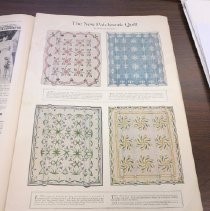
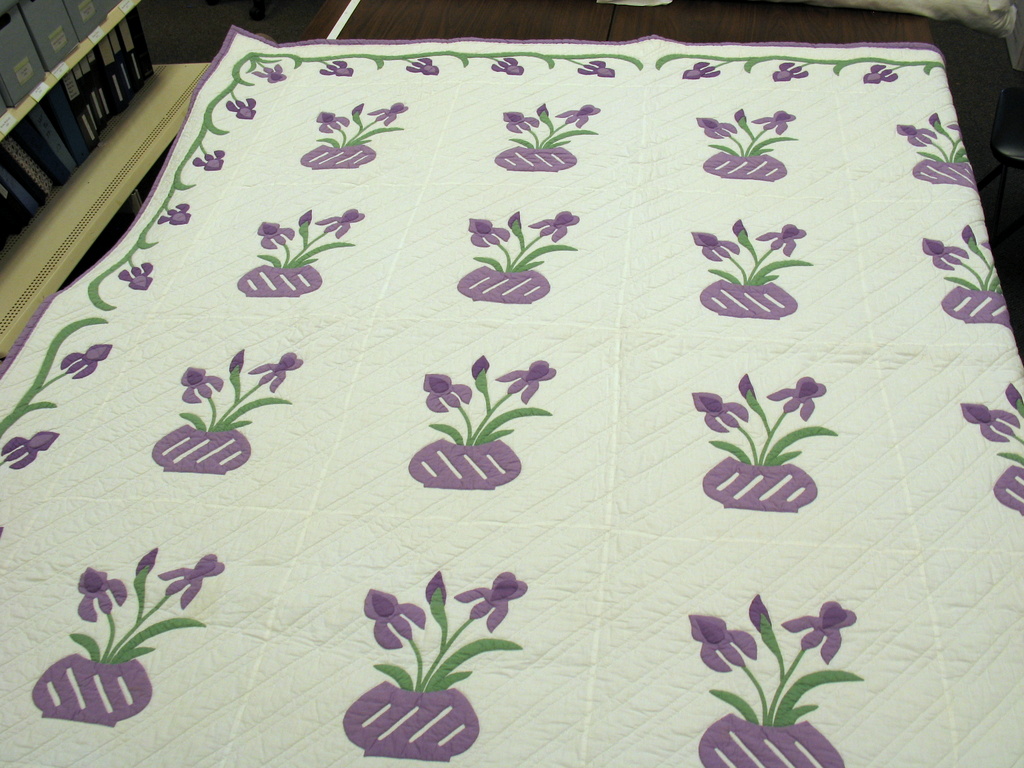
From the collection of The Quilters Hall of Fame.
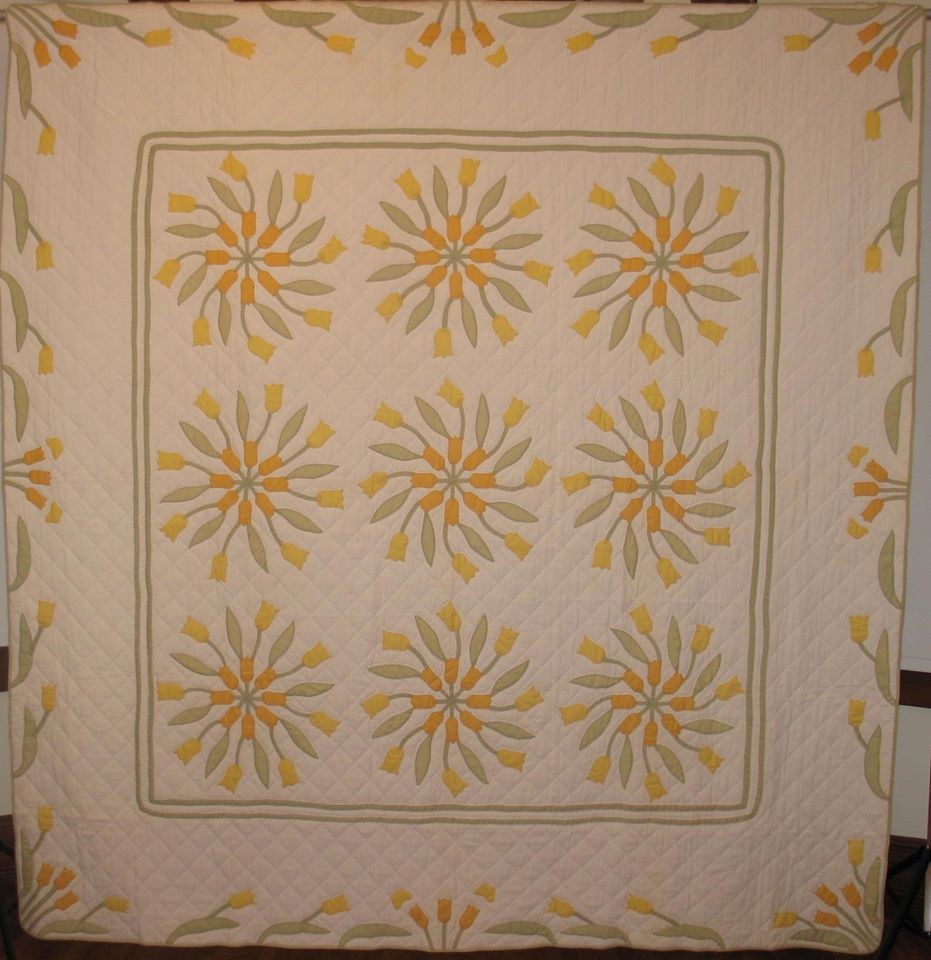
Back to the garden.
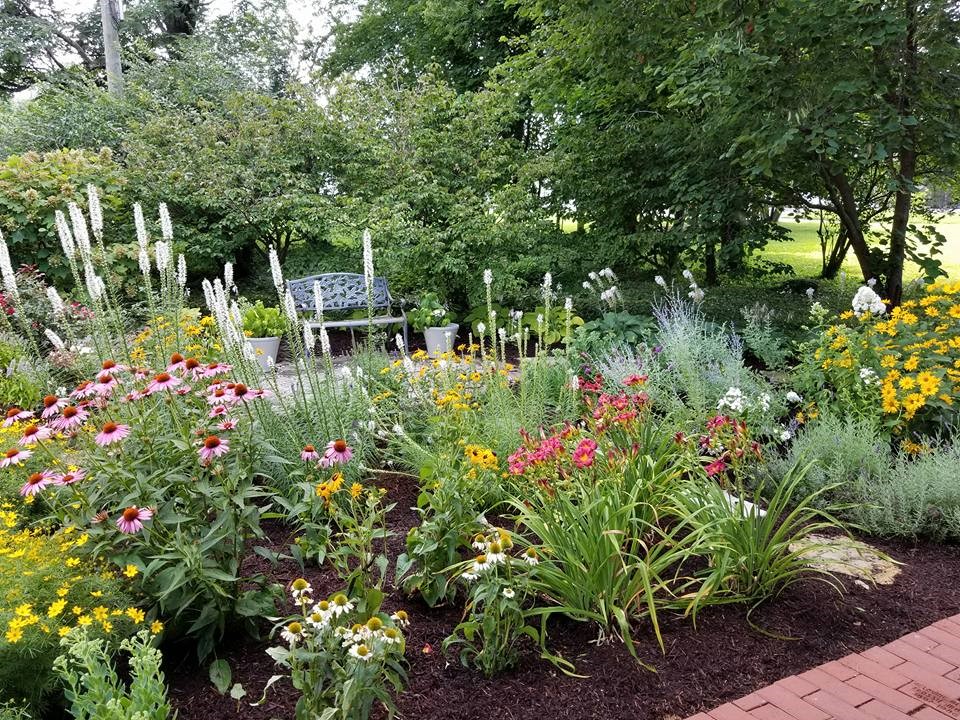
For all the beauty, I’m pretty sure this is not what the yard looked like in Marie’s time. Her style would probably have been simpler and somewhat old-fashioned, leaning more towards bedding plants and perhaps a border. The garden is now maintained by volunteers… thanks to every one of them! And while it is still a lot of work, many hands make the work lighter. But there is still one element of the original: hollyhocks. The seeds from which these plants were grown were found in the basement of the house when The Quilters Hall of Fame took ownership of the house. Are they left over from Marie Webster days?! In the fall we will sells seeds from these plants.
Now let’s take a look at how the garden inspired the famous Webster designs. What’s a garden without at least one rose bush? (Up until last year, I had 40, but it was just too much work, so I cut back to six.) After that first “American Beauty Rose,” Marie patterned “Magpie Rose,” “Cherokee Rose,” “Wreath of Roses,” “Cluster of Roses,” and “Wayside Roses.” Here are two of those quilts.
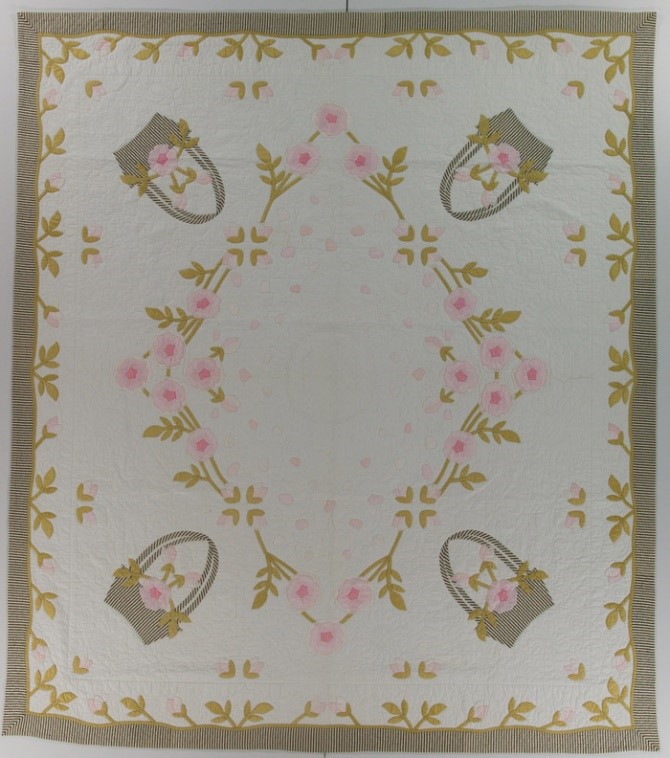
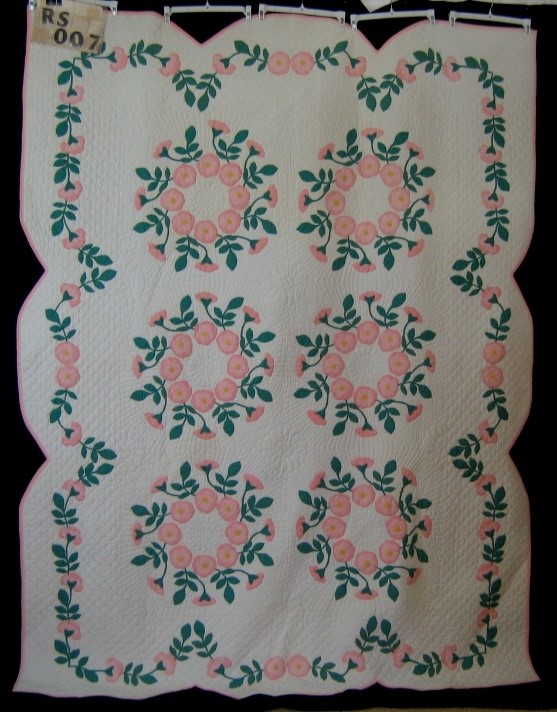
Wreath of Roses. (Maker not recorded). 1930’s. From Minnesota Quilters Inc., Minnesota Quilt Project. Published in The Quilt Index, http://www.quiltindex.org/fulldisplay.php?kid=49-7E-15C9. Accessed: 06/15/2020
Daisies are another old-time favorite. An early daisy pattern is recalled today in clumps of daisies from Marie’s Garden.
And here’s a shot of the current dogwood tree along with an original pattern for one dogwood quilt, followed by a Webster dogwood quilt in a different setting. If you would like to see the complete Dogwood pattern, and two others (fascinating to imagine using those old templates), there are links at the end.
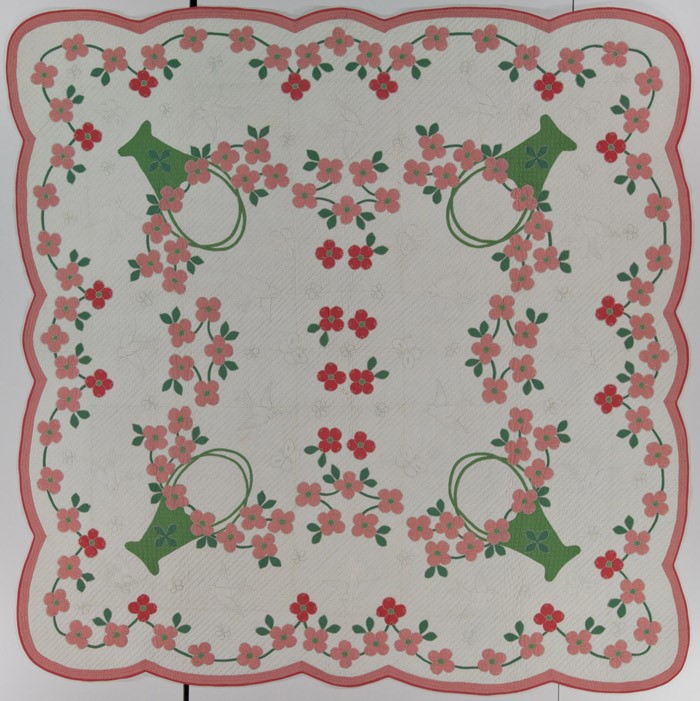
I imagine any old-fashioned garden would have poppies, and that flower inspired one of Webster’s most iconic quilts. Here it is in the yellow colorway; it’s also popular in pink and stunning in red.
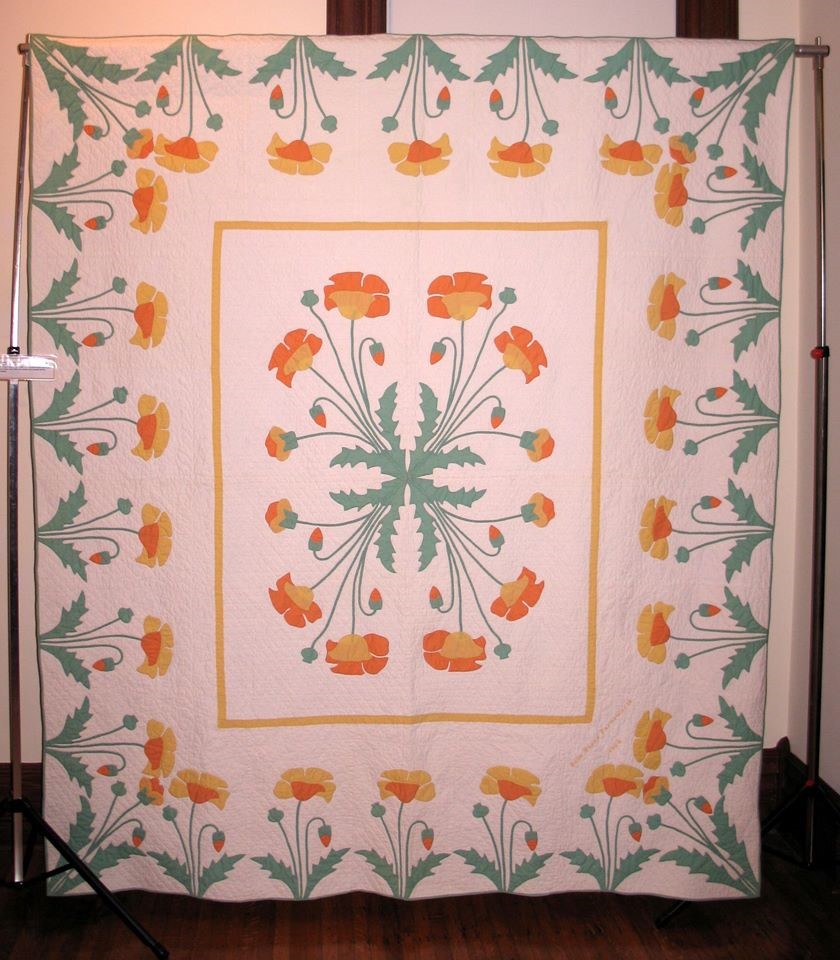
Marie didn’t just have a quilt design business; she actually made quilts. Here are some which might have come from her own flowers. Morning Glory, followed by two versions of Morning Glory Wreath. This graceful design first appeared in the Ladies’ Home Journal in August 1912, along with five other baby quilts she designed. Marie made this larger version of the pattern for her granddaughter, Katherine Marie, about 1940. From the collection of Katherine Webster Dwight.ned.
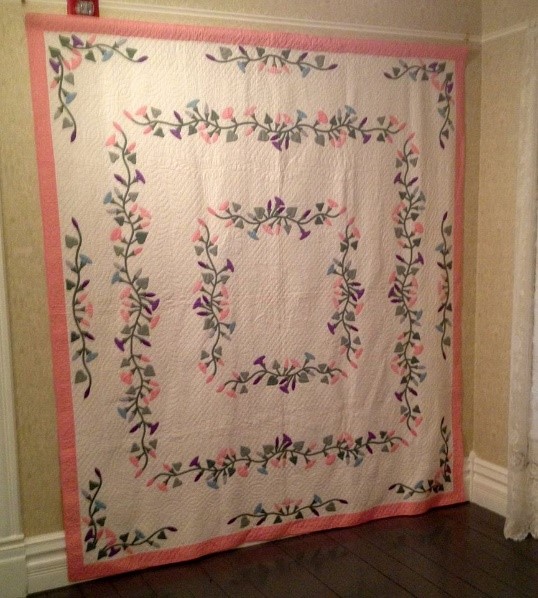
On the right, “Morning Glory Wreath” made by Marie Webster for her granddaughter, Katherine Marie, about 1940. From the collection of Katherine Webster Dwight.
Here are two more Webster-made quilts based on popular flowers, nasturtiums (I’ve grown them; they’re edible) and pansies (an early-spring pop of color).
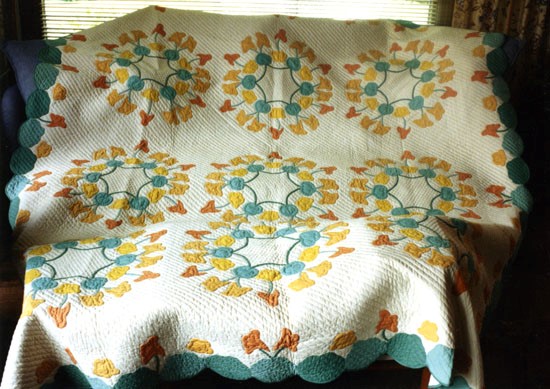
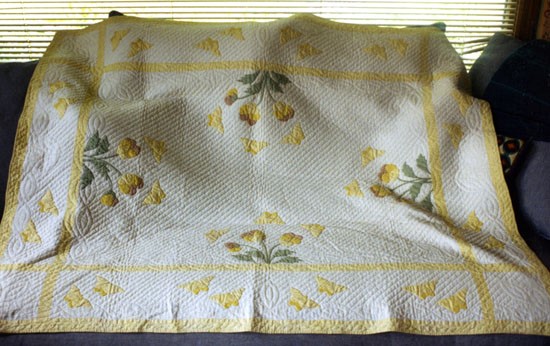
Of course, there are other popular designs growing in the Webster flower bed: more tulips, sunflowers, baskets of blossoms.
Marie Webster’s designs have a timeless appeal in and of themselves, but her style is not in vogue today—maybe more white than we want, maybe too ordered. But her flowers still work in present day contexts. A friend of the Hall of Fame collaborated with one of Marie’s granddaughters on this book which adapts the designs to pillows, small quilts and other contemporary uses.
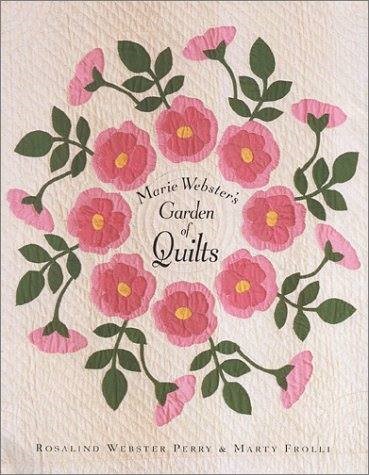
I saw one of the designs at the Museum a few years ago, and it’s a great sampler of Marie’s flowers. The addition of the ticking fabric gives it a fresh, modern look.
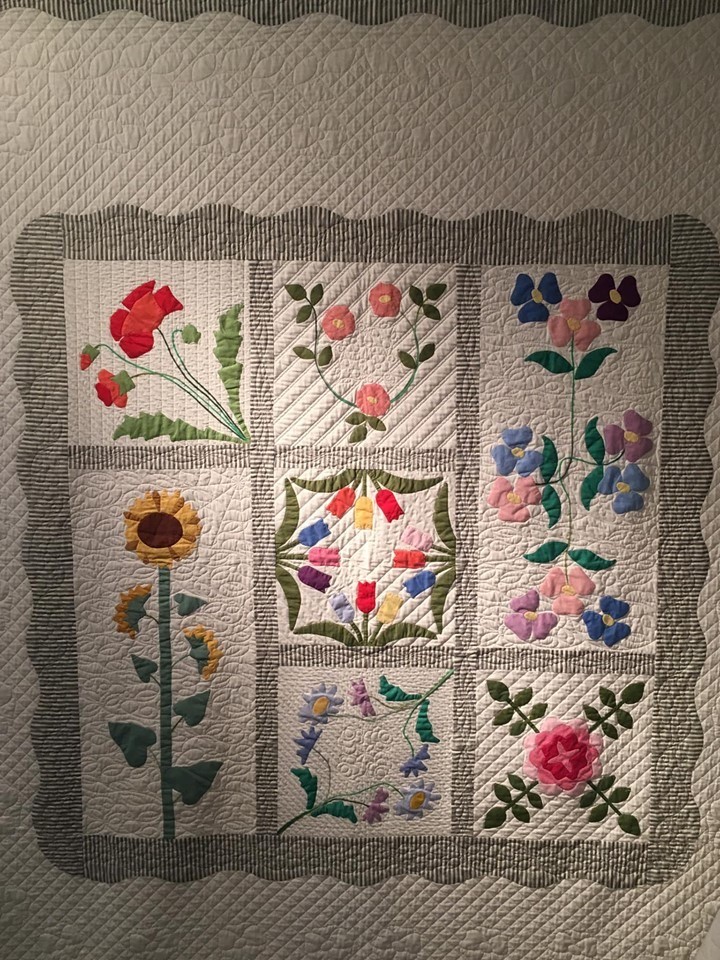
And in Fall, 2017, there was a juried exhibit called Dialogues: Contemporary Responses to Marie Webster’s Quilts with contemporary quilts by Midwestern members of the Studio Art Quilt Associates juxtaposed with Marie’s designs. Here are some photos from that exhibit to show you how the two styles both capture the essence of the flowers.
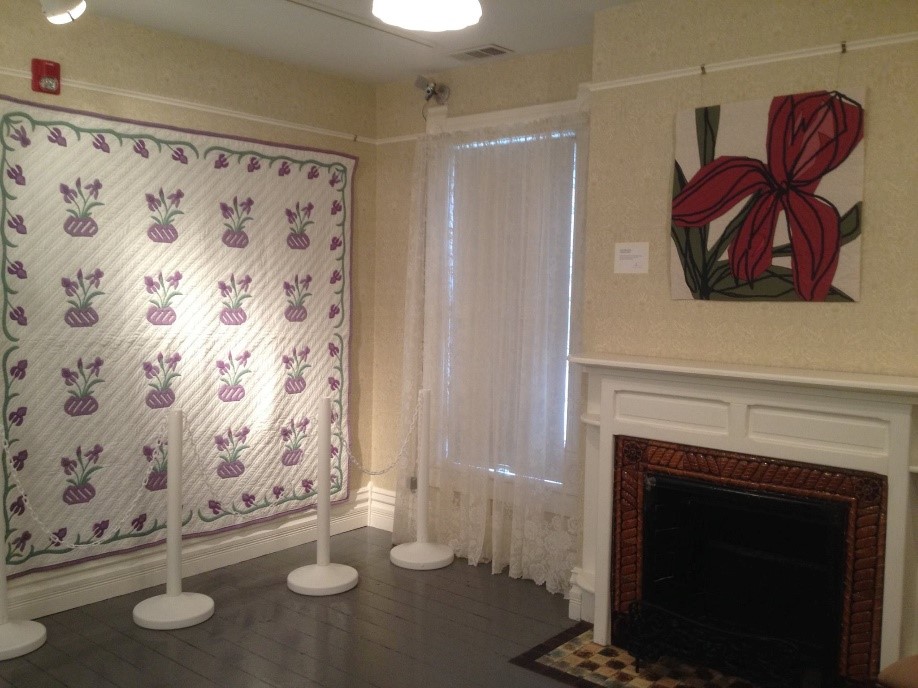
“Iridaceous” designed and made by Linda Witte Henke on the right.
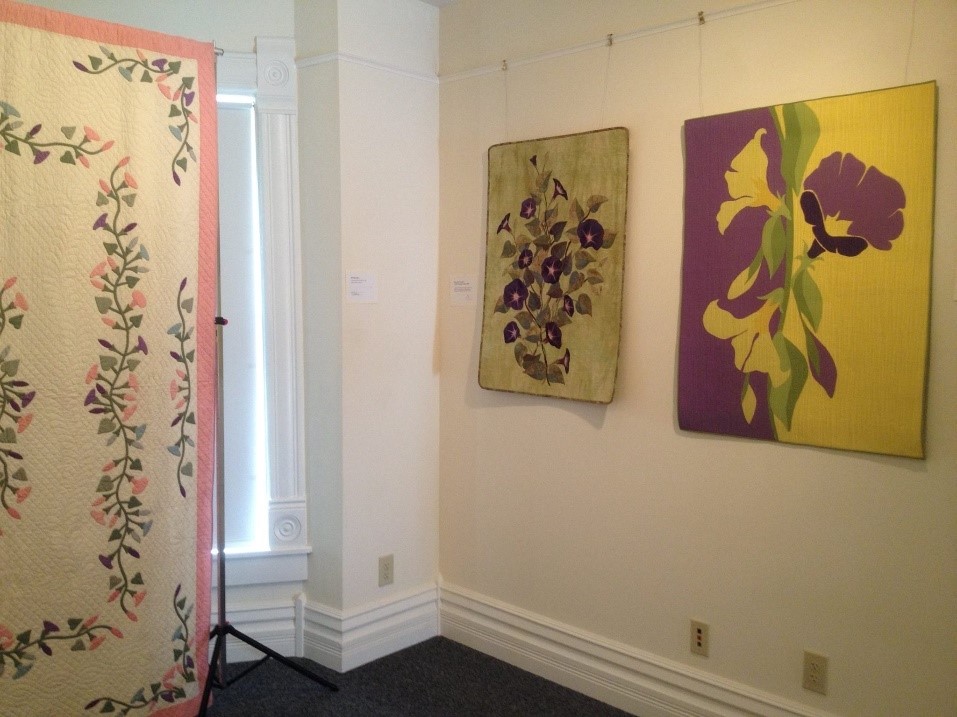
“Purple Trumpets of Glory” designed and made by Mary Ann Van Soest in the center. “Morning Glories: A Joy Forever” designed and made by Joanne Alberda on the right.
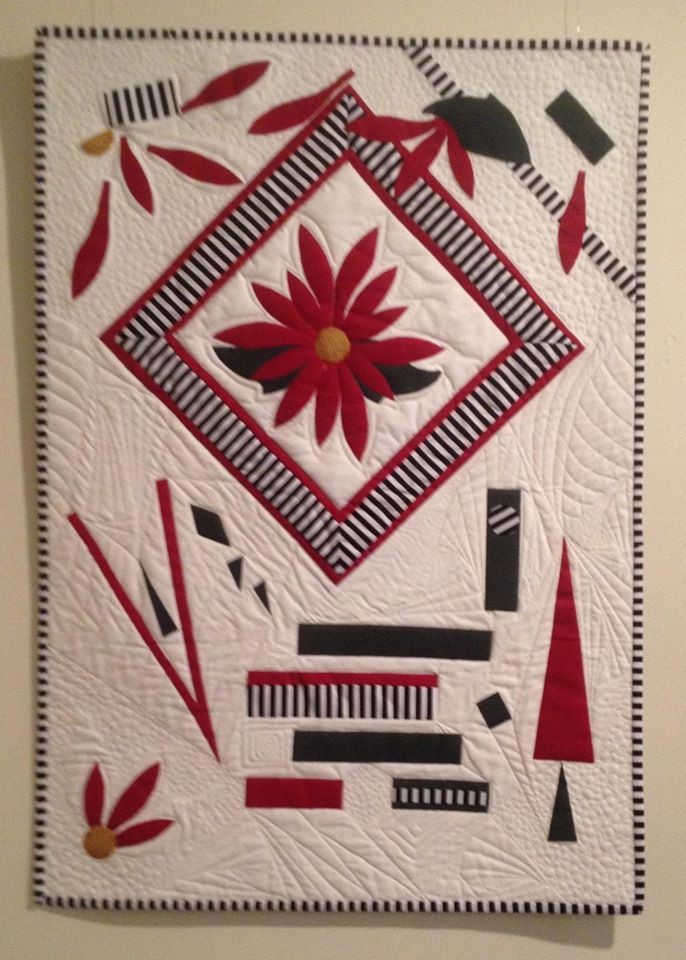
On the chair, “Poppy” quilt from the Quiltsmart Marie Webster Series, inspired by Marie’s original designs using Quiltsmart printed interfacing.
I hope you’ve enjoyed this walk through Marie’s Garden of quilts. When you’re able, try to visit in person. It even looks good in the winter.
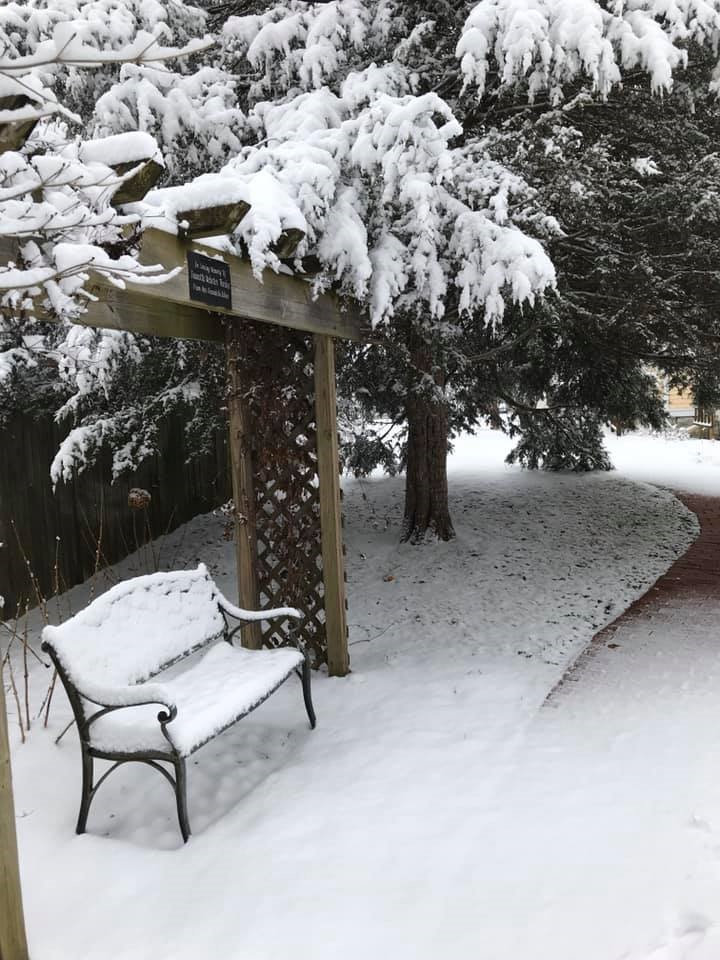
Your quilting friend,
Anna
Suggested links:
“American Beauty” pattern https://quiltershalloffame.pastperfectonline.com/webobject/42E3C360-77E5-45E7-ACEE-559504503319
Complete “Dogwood” pattern https://quiltershalloffame.pastperfectonline.com/webobject/52FC825B-AA24-4391-BC00-995383132853
“Pink Dogwood” kit https://quiltershalloffame.pastperfectonline.com/webobject/2D593DFC-0BB6-46D6-9F70-172460710460

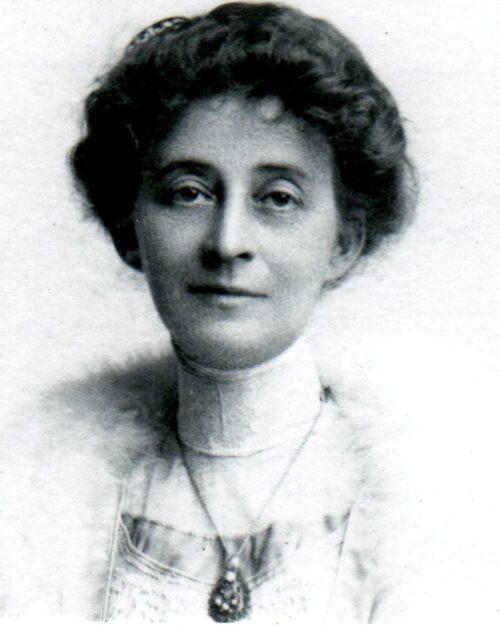





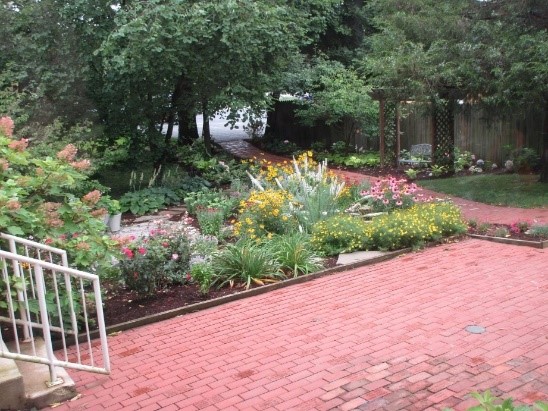
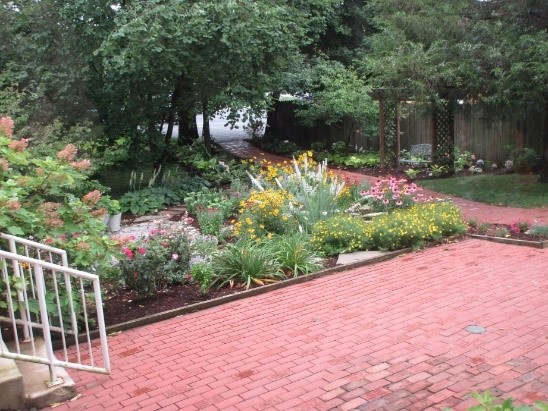
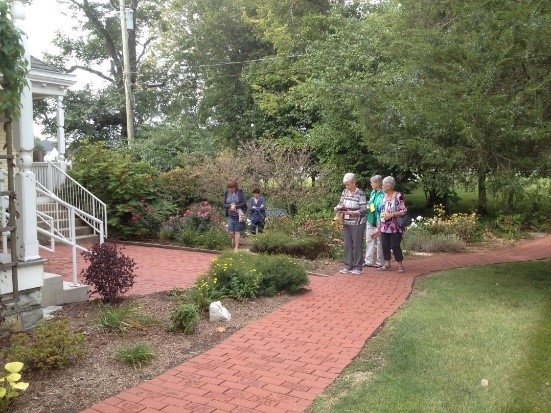
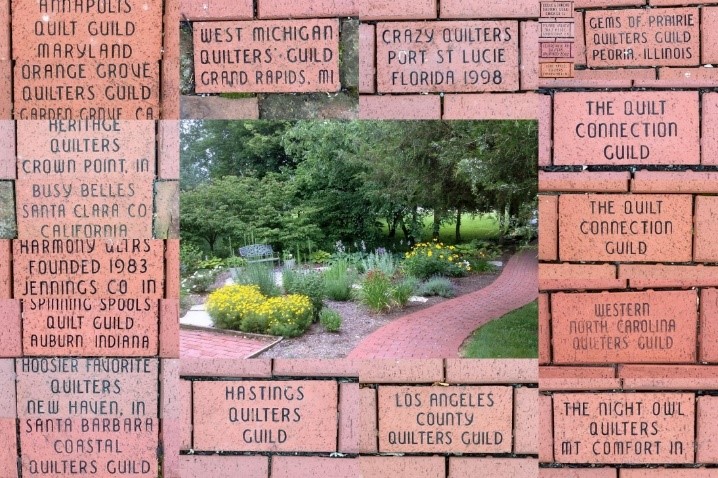
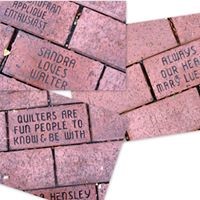
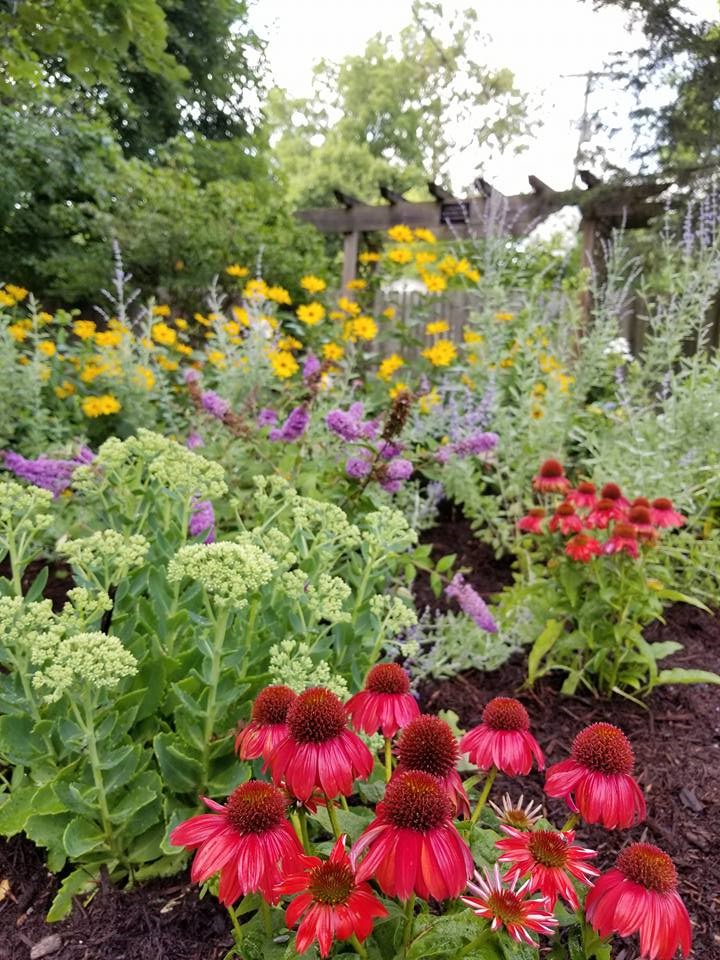
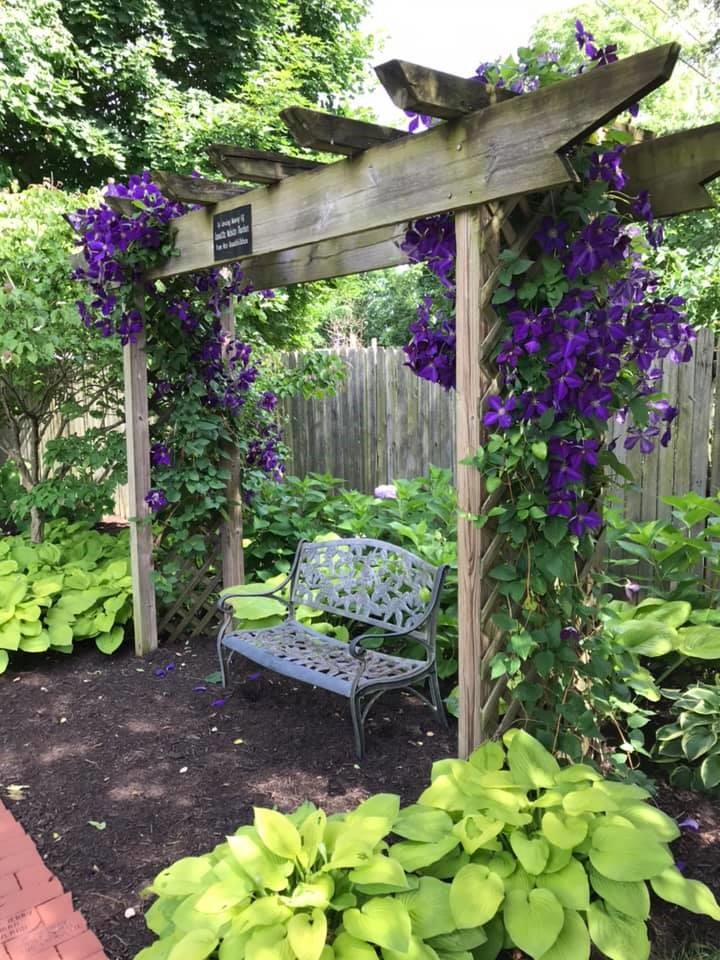
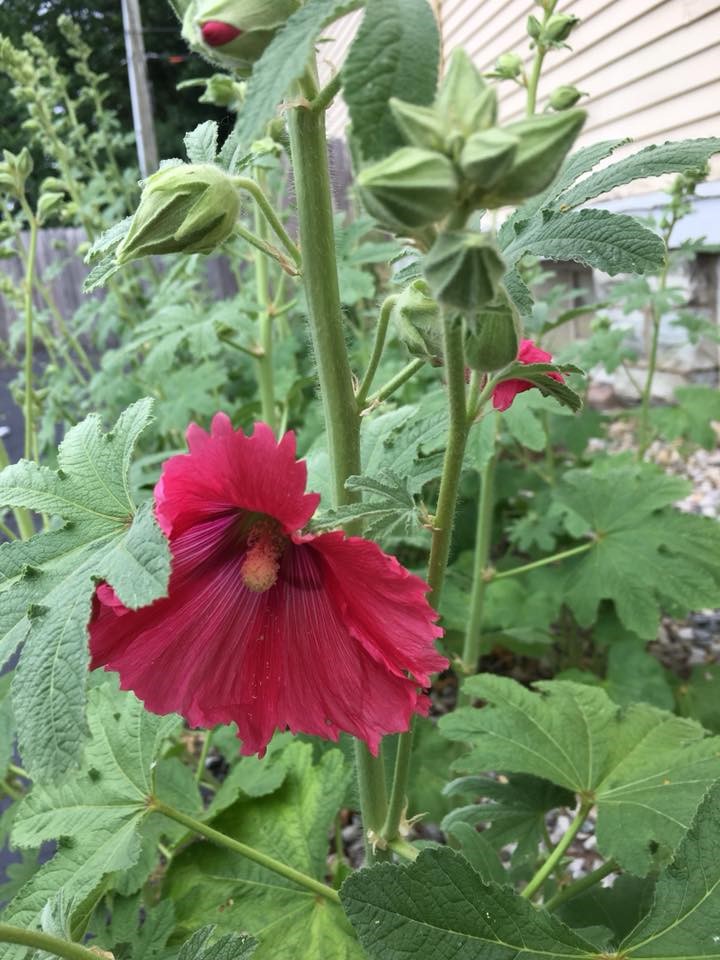
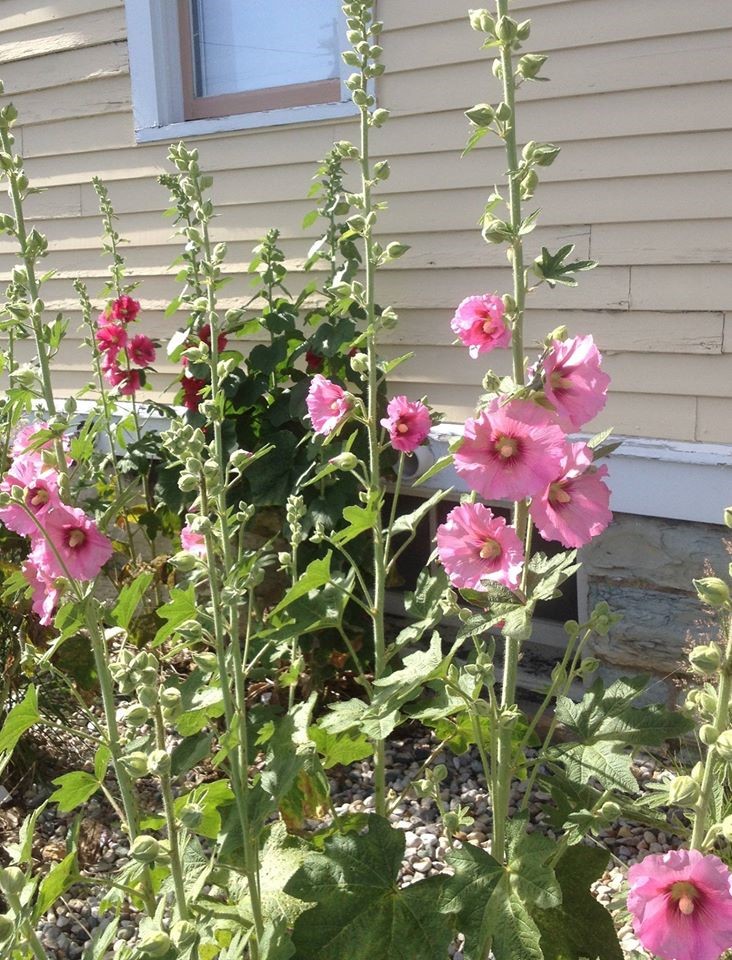
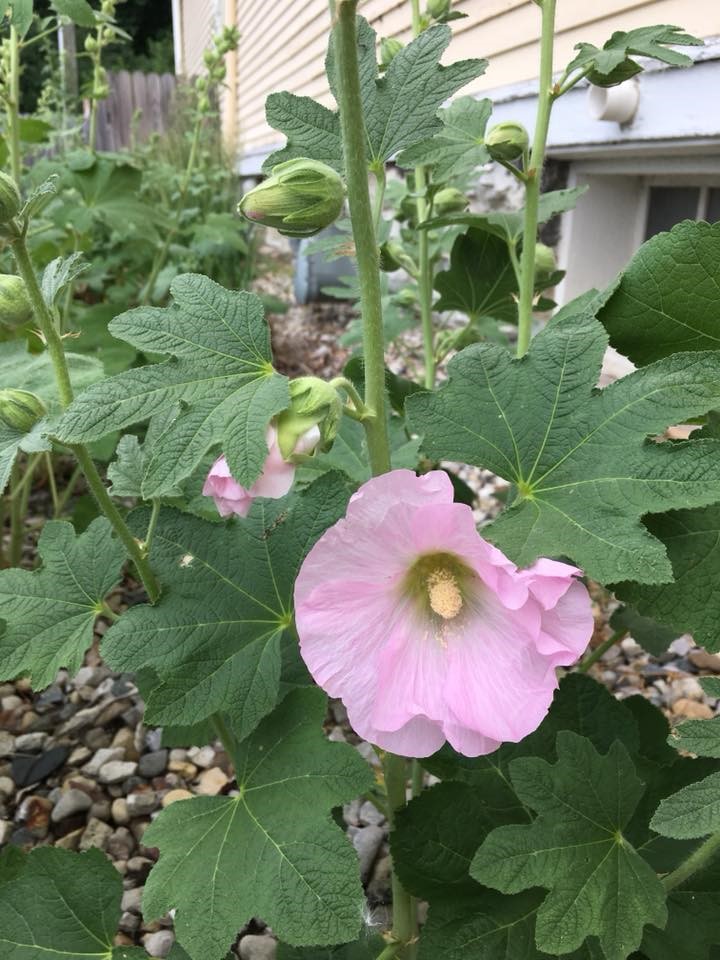
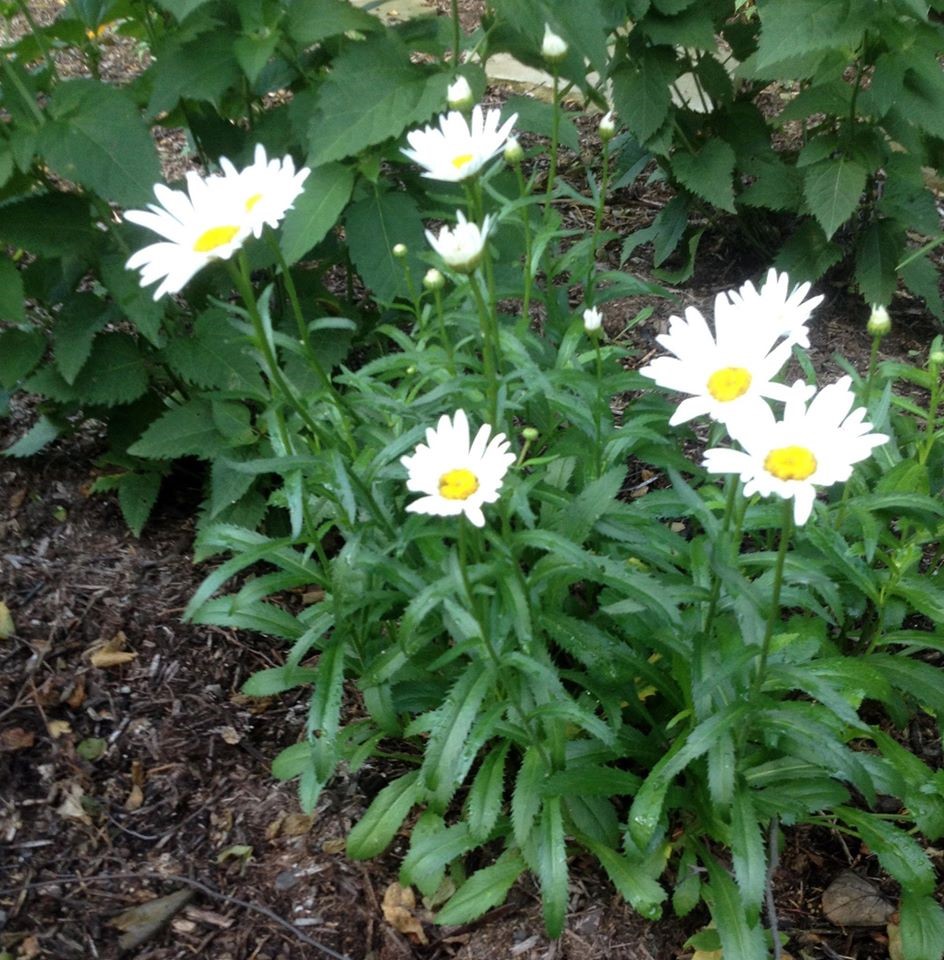
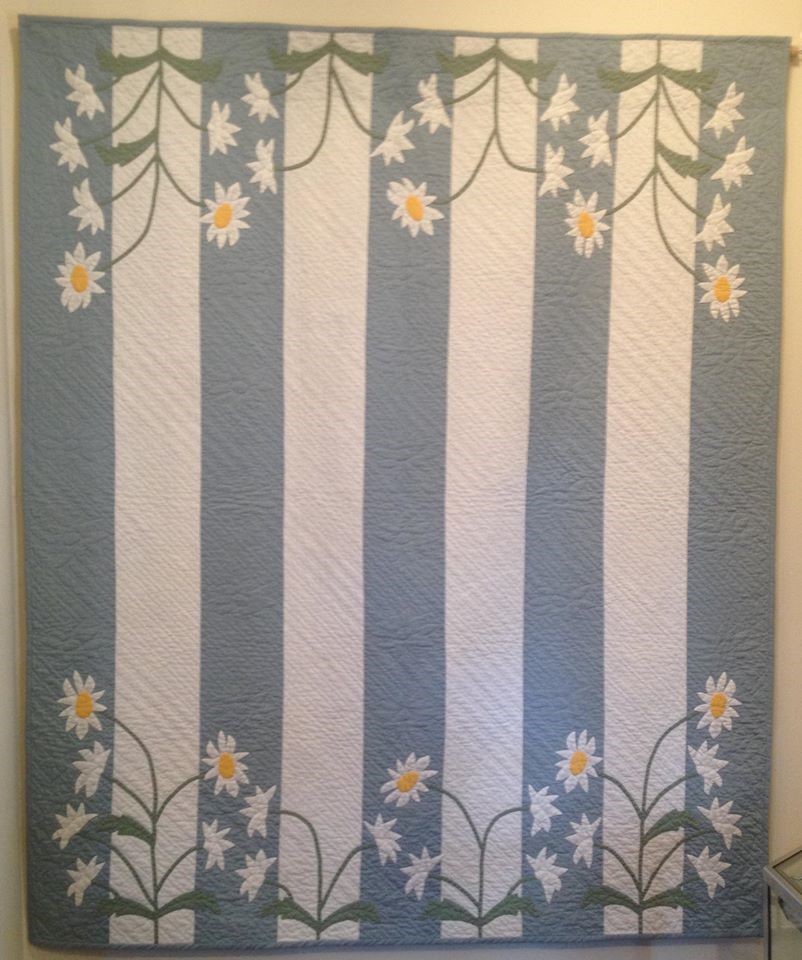
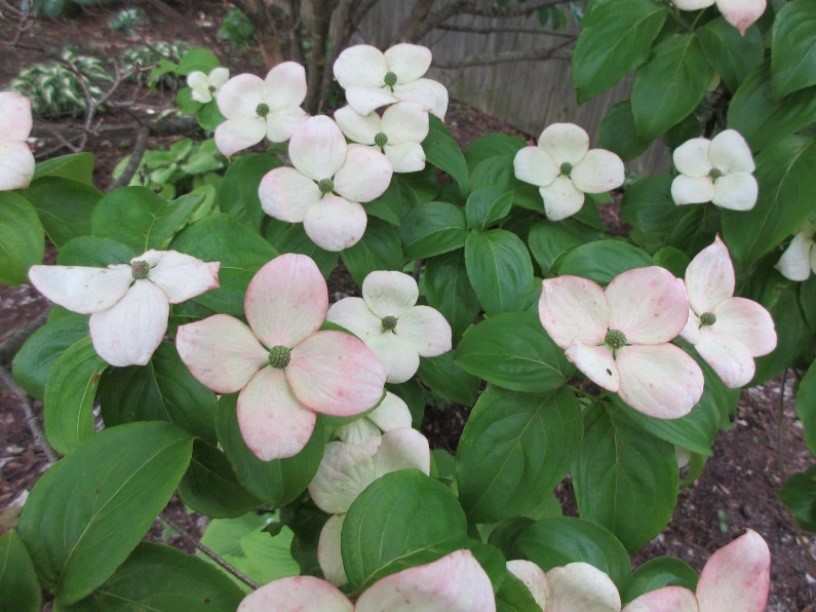
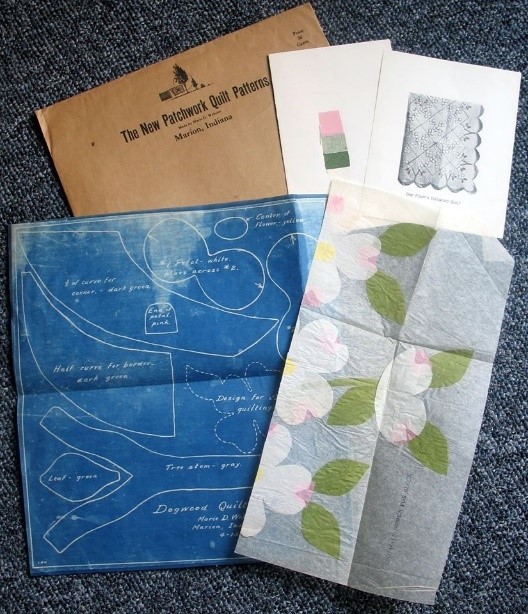
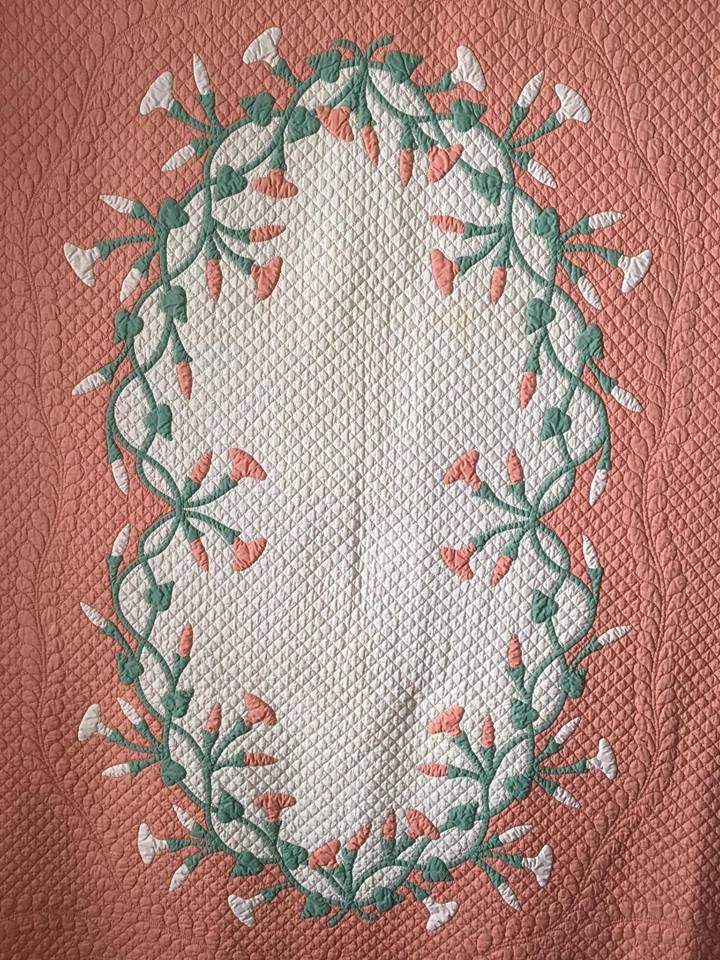
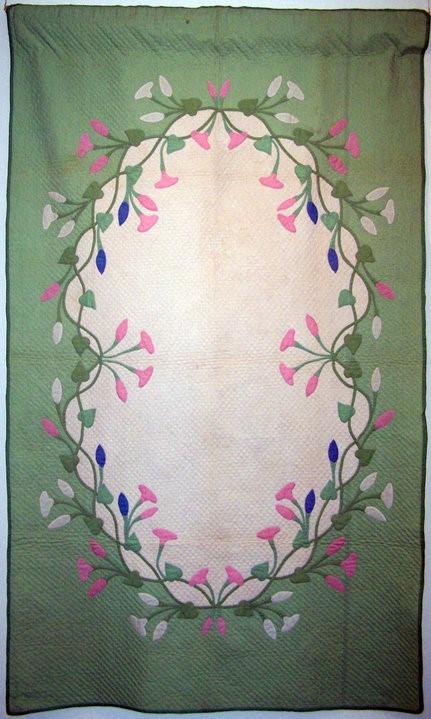
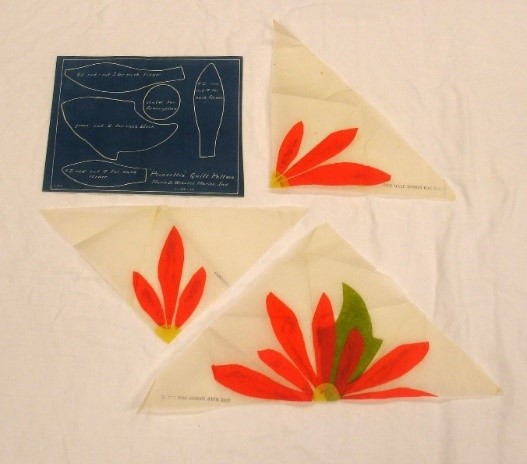
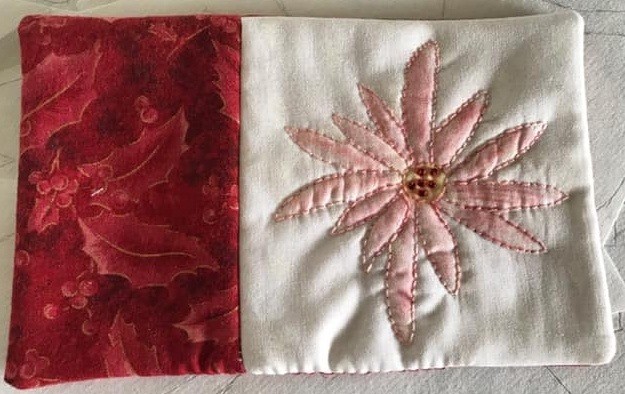
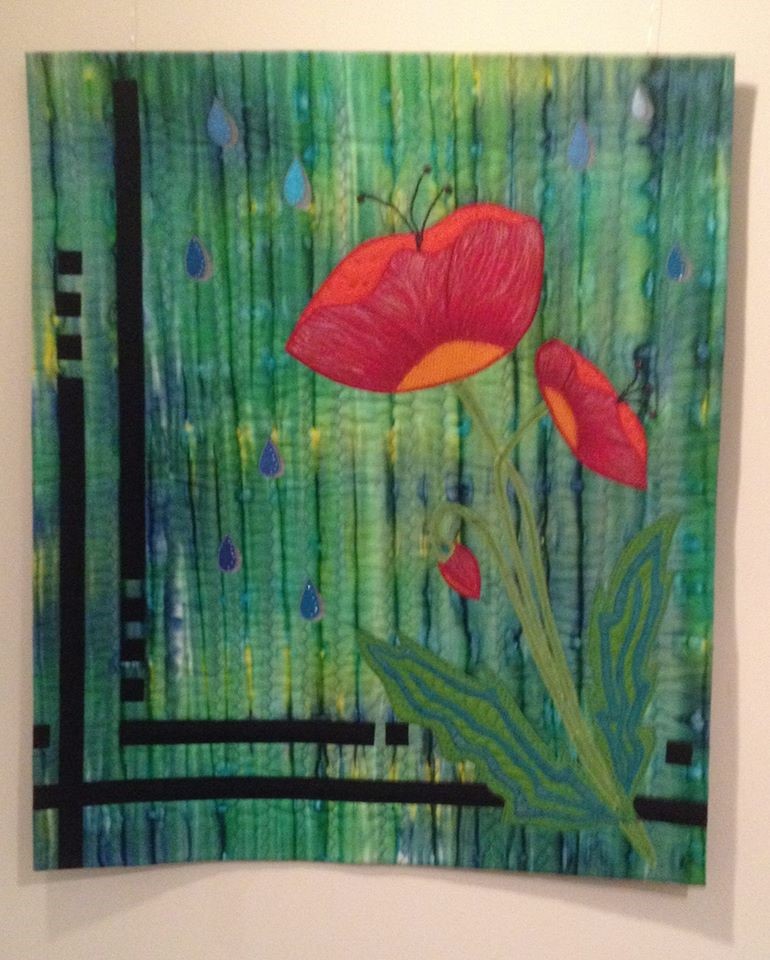
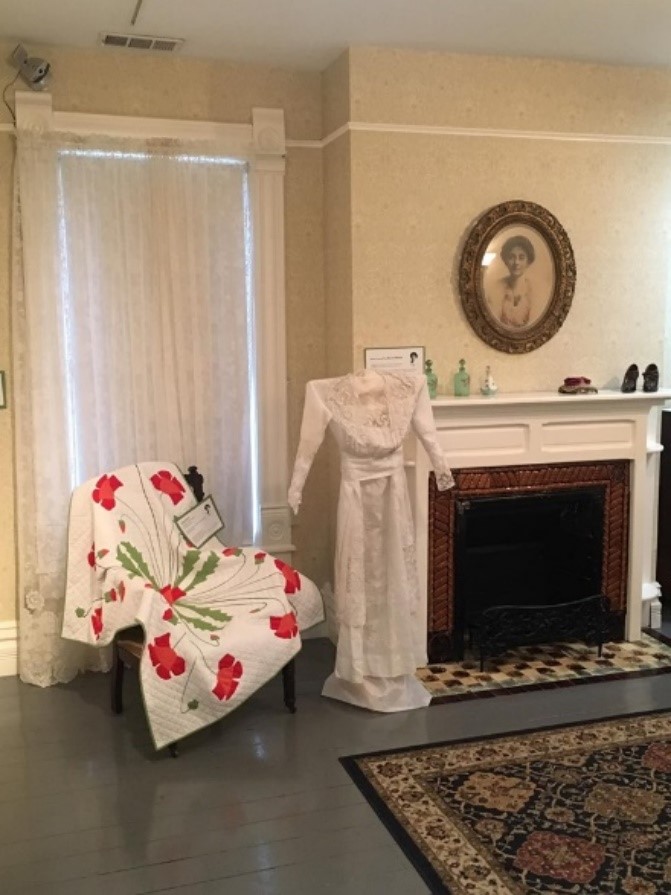
Great blog post! Thank you for sharing all the photos.